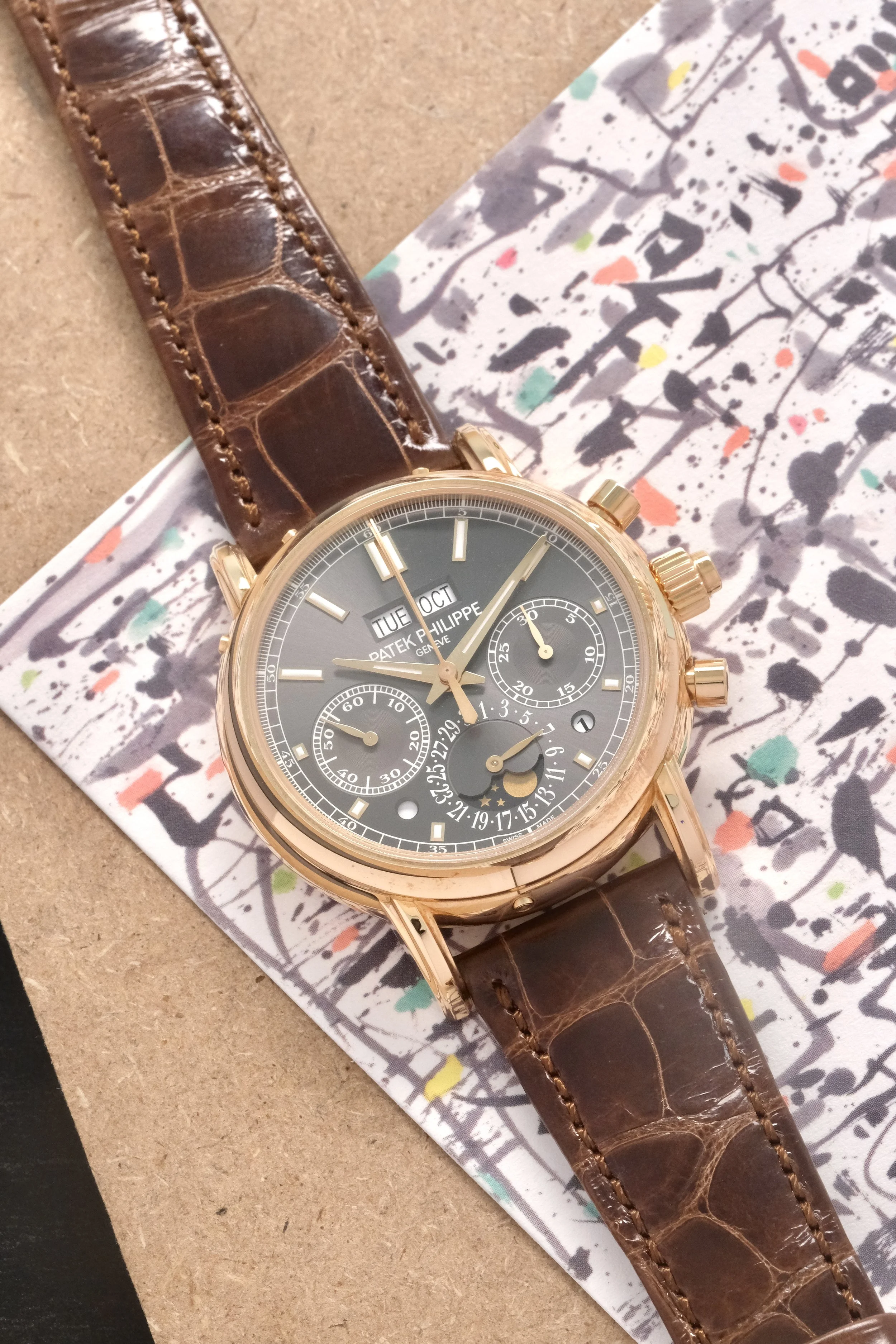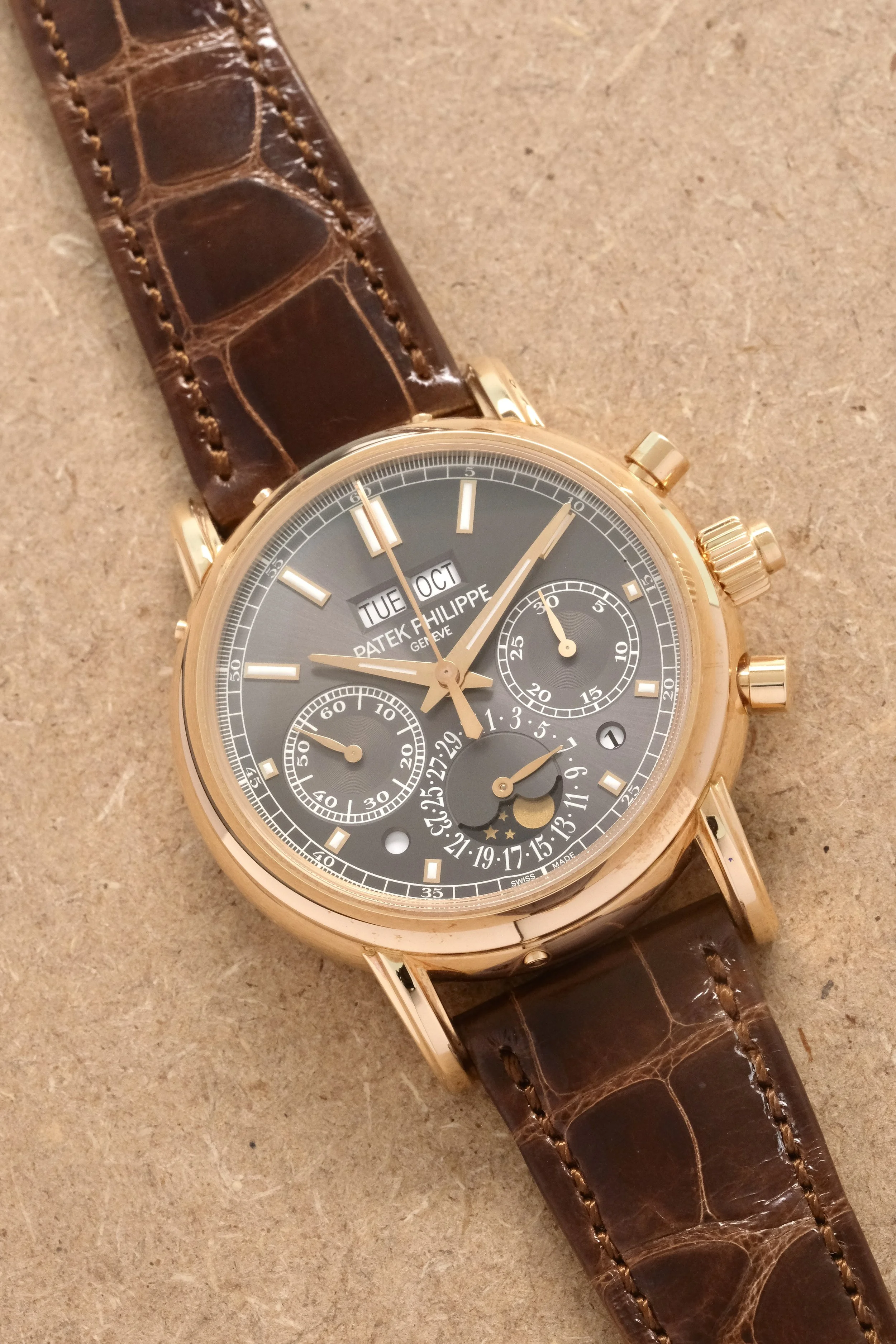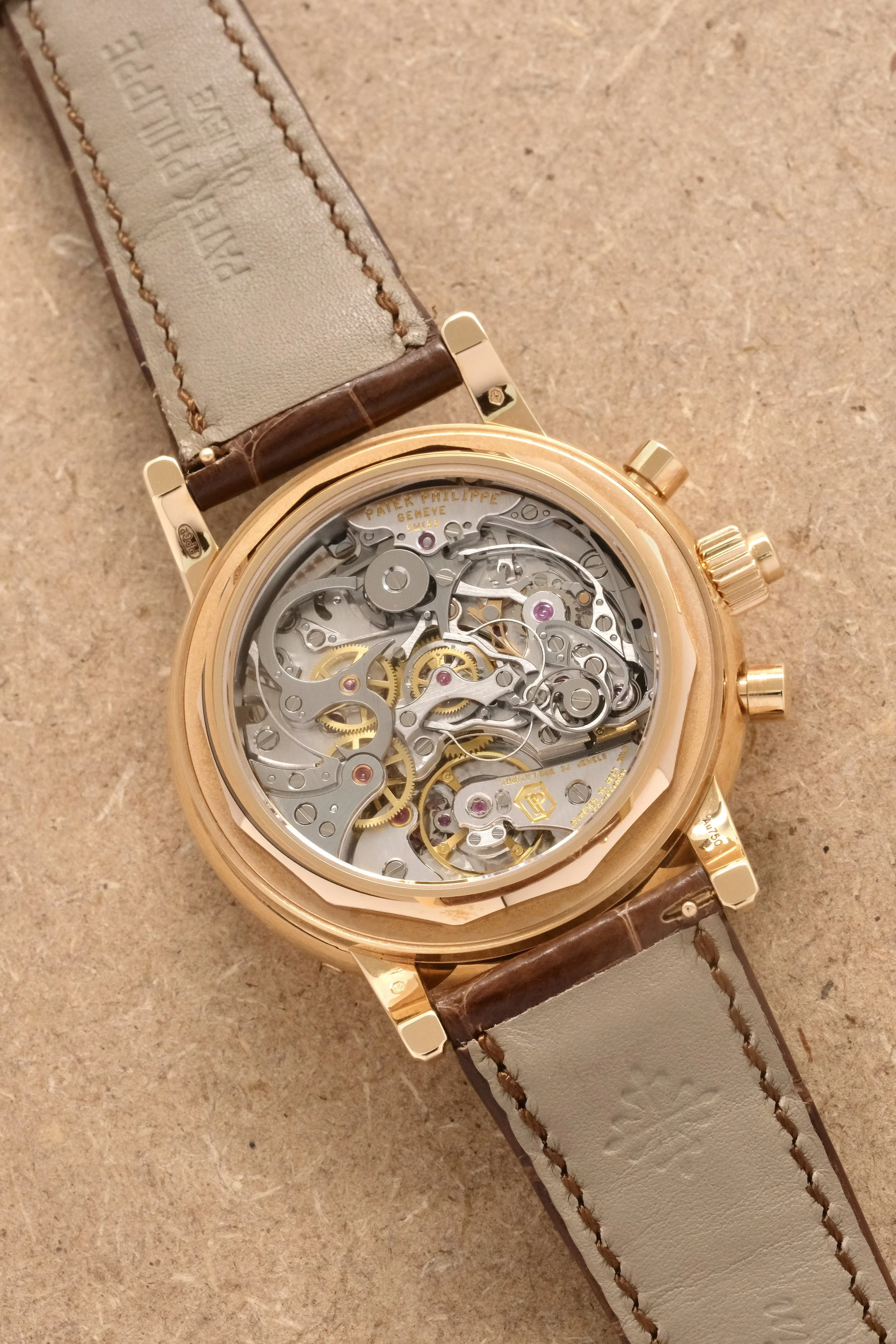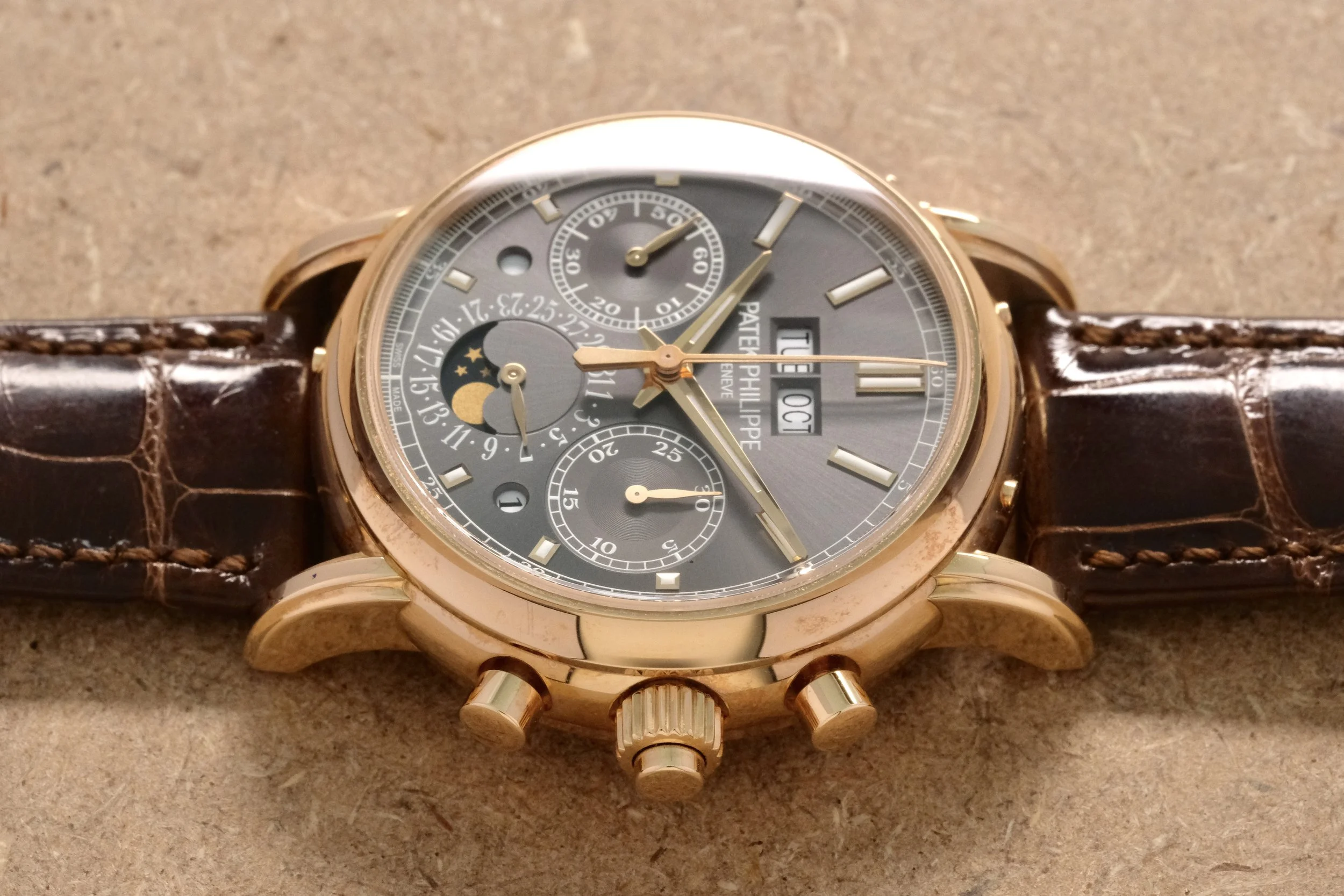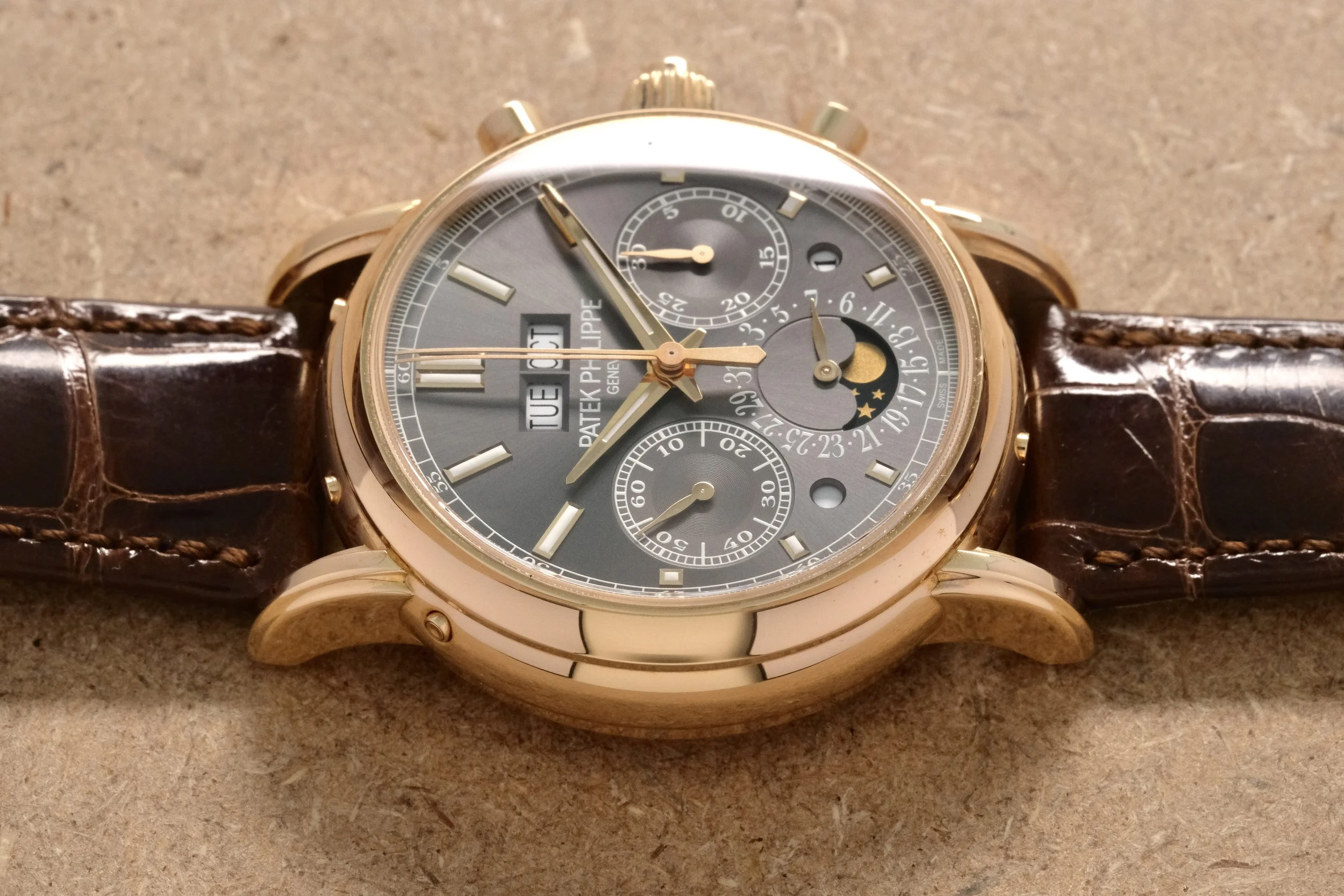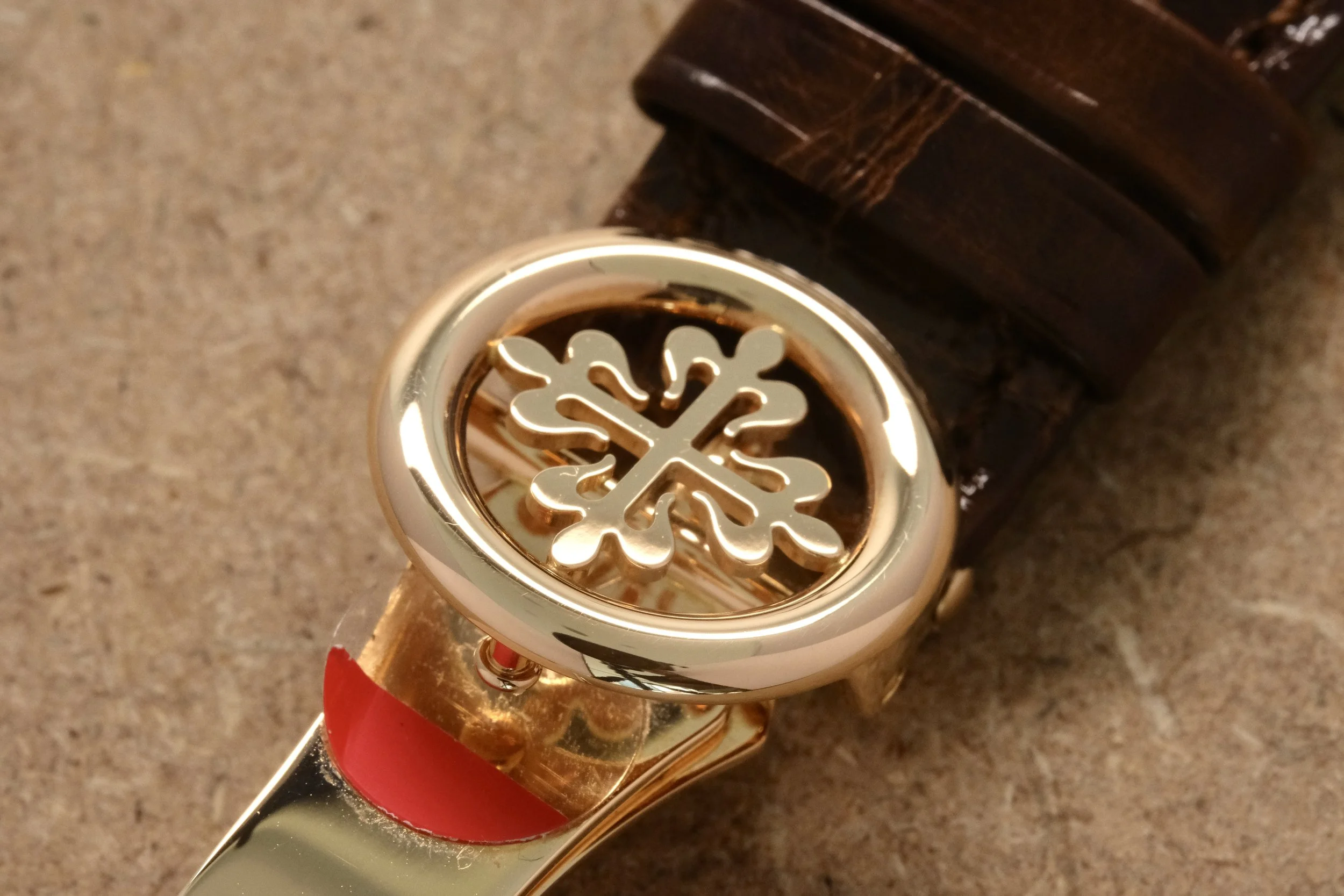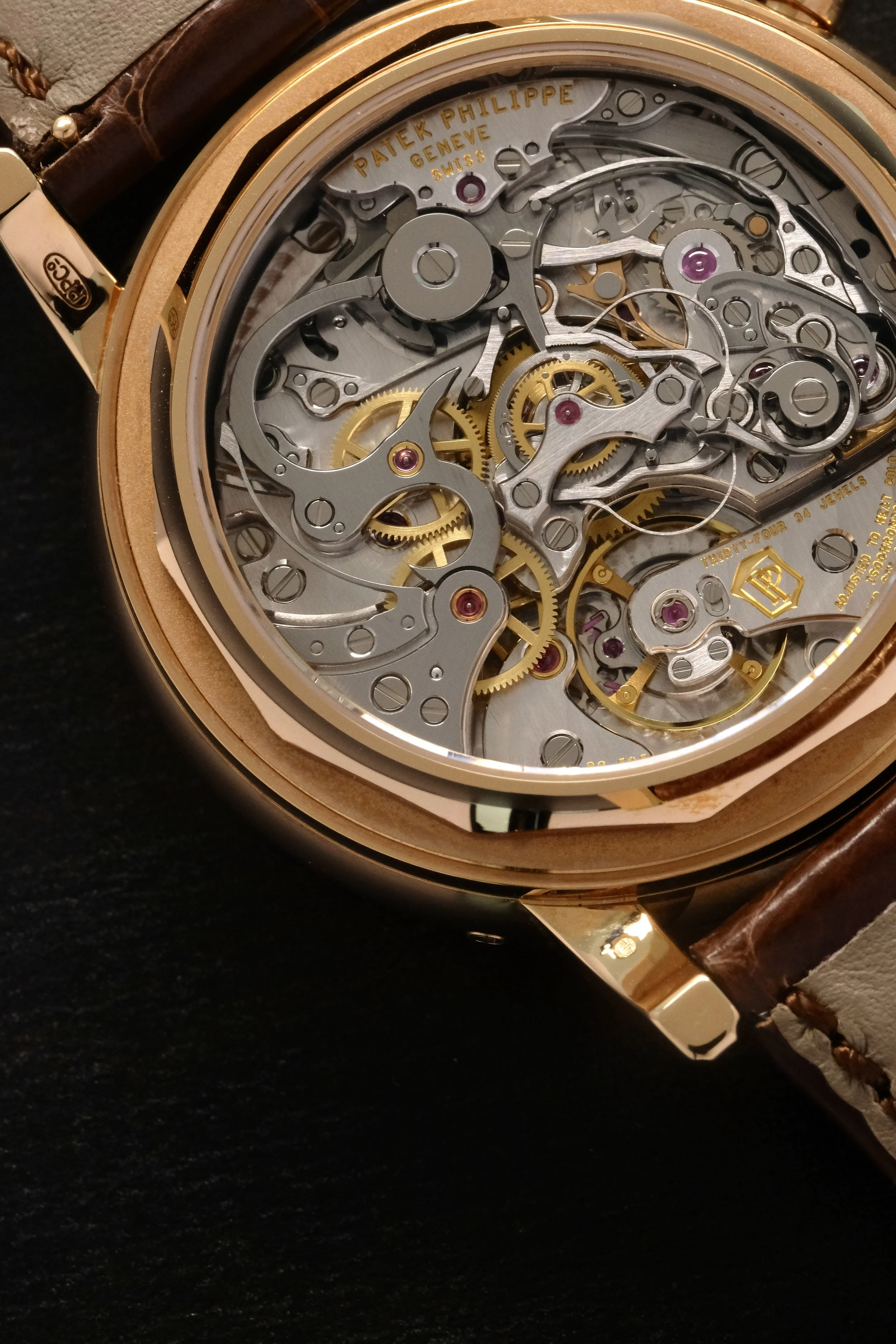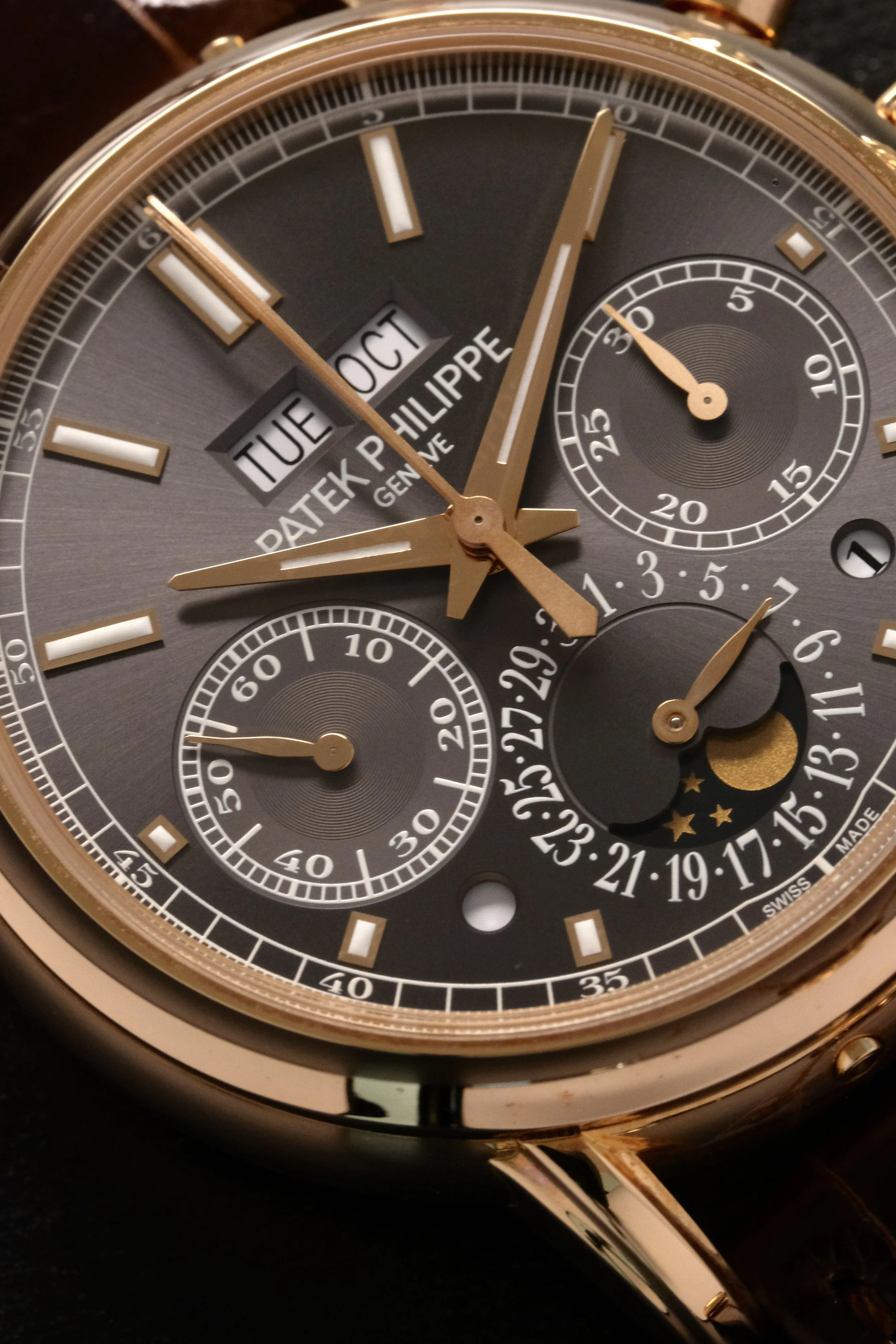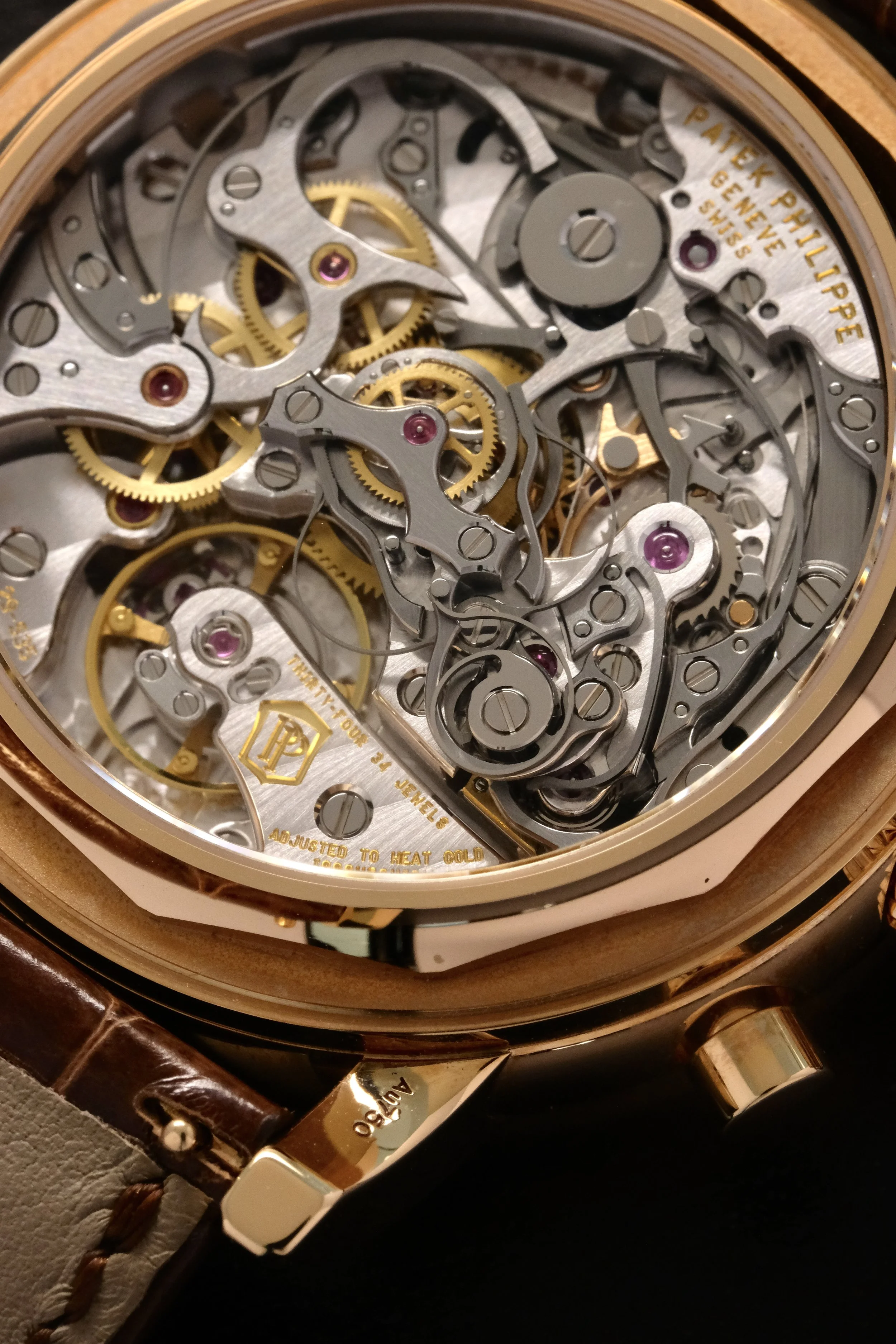Price excludes 9% GST for local Singapore buyers
Patek Philippe has been producing Perpetual Calendar Chronographs since the 1940s, and it is arguably the most important complication in the world of horology.
In 1996, for the first time Patek Philippe introduced a Perpetual Calendar with Split-Seconds Chronograph, reference 5004, based on the Lemania Cal. 2310, highly modified to have the rattrapante complication. It was produced all the way until 2012 when Patek introduced the successor, reference 5204.
In 2012, one year after the introduction of the reference 5270 Perpetual Calendar Chronograph, Patek Philippe introduced the 5204 Perpetual Calendar Split-Seconds Chronograph. And it features Patek Philippe’s in-house movement.
This example is the reference 5204R-011 with a beautiful combination of 18K Rose Gold and Anthracite Slate Grey sunburst dial.
The case measures at 40mm in diameter with 14.3mm thickness. The case is complex with design inspired from their earlier chronographs. It has concave bezel and convex case band. The lugs are beautifully sculpted and welded using traditional methods. It has round pushers with additional split-seconds pusher on the crown.
The dial is well balanced with two-aperture at 12 displaying the day of the week and month, inverted moon phase indicator at 6 with date indicator surrounding it, and it is flanked with two round apertures displaying the day/night and leap year. There are also two sub-dials for the running second and the chronograph minute counter.
The 5204 is equipped with the Cal. CHR 29-535 PS Q in-house Split-Seconds Chronograph movement with a Perpetual Calendar module on the dial side. It is notably thin at 8.7mm, whereas most of the competitors are at over 9mm. It beats at 28,800 bph with 65 hours power reserve. It is also immaculately finished at the highest level.
Price excludes 9% GST for local Singapore buyers
Patek Philippe has been producing Perpetual Calendar Chronographs since the 1940s, and it is arguably the most important complication in the world of horology.
In 1996, for the first time Patek Philippe introduced a Perpetual Calendar with Split-Seconds Chronograph, reference 5004, based on the Lemania Cal. 2310, highly modified to have the rattrapante complication. It was produced all the way until 2012 when Patek introduced the successor, reference 5204.
In 2012, one year after the introduction of the reference 5270 Perpetual Calendar Chronograph, Patek Philippe introduced the 5204 Perpetual Calendar Split-Seconds Chronograph. And it features Patek Philippe’s in-house movement.
This example is the reference 5204R-011 with a beautiful combination of 18K Rose Gold and Anthracite Slate Grey sunburst dial.
The case measures at 40mm in diameter with 14.3mm thickness. The case is complex with design inspired from their earlier chronographs. It has concave bezel and convex case band. The lugs are beautifully sculpted and welded using traditional methods. It has round pushers with additional split-seconds pusher on the crown.
The dial is well balanced with two-aperture at 12 displaying the day of the week and month, inverted moon phase indicator at 6 with date indicator surrounding it, and it is flanked with two round apertures displaying the day/night and leap year. There are also two sub-dials for the running second and the chronograph minute counter.
The 5204 is equipped with the Cal. CHR 29-535 PS Q in-house Split-Seconds Chronograph movement with a Perpetual Calendar module on the dial side. It is notably thin at 8.7mm, whereas most of the competitors are at over 9mm. It beats at 28,800 bph with 65 hours power reserve. It is also immaculately finished at the highest level.
